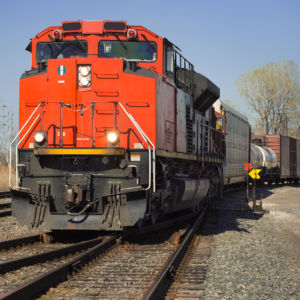Rail keeps America’s economy moving, industry advocates say, and higher labor costs could make the moving more costly, adding to inflation. So perhaps it’s no surprise the Biden administration has intervened in an ongoing labor dispute in the rail industry.
The question now is, will it help keep inflation in check, or will it drive negotiations off the rails?
Major freight railroads like Union Pacific and CSX have been negotiating a new labor contract with unions representing 115,000 workers for more than two years. In July, President Joe Biden appointed a three-member presidential emergency board [PEB], and it issued its report on August 17. It calls for a 24 percent wage increase over the five-year period from 2020 through 2024. A 14.1 percent wage increase would be effective immediately.
“The recommendations also include five annual $1,000 lump sum payments, adjustments to health care premiums, and limited changes to work rules,” said the National Carriers Conference Committee (NCCC) in a statement. “A portion of the wage increases and lump sum payments would be retroactive, resulting in more than $11,000 on average in immediate payouts to employees.”
If accepted by rail carriers and unions, the recommendations would lead to the largest general wage increase in 40 years. In fact, rail industry insiders say, it’s the largest pay increase in modern history, and the process has unfolded just as the unions wanted. The proposed pay hikes were significantly higher than those proposed by the rail companies.
So how do they feel about the results?
Association of American Railroads (AAR) President and CEO Ian Jefferies is not outright rejecting the idea. While the Biden PEB’s recommendations exceed the proposal from rail carriers, Jeffries said they provide what he called a useful basis to reach a resolution.
“In the interests of all rail stakeholders, now is the time for railroads and their unions to reach a contract,” said Jeffries. “The industry is prepared to propose agreements based on the PEB’s recommendations to provide our employees with long overdue pay increases and avert rail service interruptions.”
Some union members, however, are still unhappy.
In July, members of the Brotherhood of Locomotive Engineers and Trainmen voted to authorize a strike with an overwhelming 99 percent in support. Biden created the PEB — and stopped the work stoppage clock — soon after. The World Socialist Web Site, which claims to speak for members of the labor movement, says railroaders were outraged.
“My initial response is, who the hell is representing us?” one Iowa railroader said. “We need people that actually know what the f*** is happening out here in the real world. This contract will be voted down. The Democratic Party just lost most of their support from rail workers.”
NCCC, which represents the nation’s freight railroads in national collective bargaining, offered a more diplomatic response.
“Although the recommended wage terms significantly exceed those proposed by the carriers in this round and are far above those contained in prior rail labor settlements, it is in the best interests of all stakeholders – including customers, employees, and the public – for the railroads and rail labor organizations to settle this dispute and prevent service disruptions,” said NCCC.
“Accordingly, the railroads are prepared to meet with the rail unions and reach agreements based on the PEB report without delay.”
Marc Scribner, senior transportation policy analyst at Reason Foundation, says the PEB’s recommendations were not the win labor was hoping for. The PEB focused heavily on wages and benefits rather than getting into some of the non-wage and benefits issues rail unions have been focused on of late, for example.
“Crew size has been a major point of contention, whether carriers — as they increasingly automate their trains — can take advantage of that automation and reduce the number of train crew members,” Scribner told Inside Sources. “The unions were certainly hoping for those provisions that did not appear in the PEB recommendations.”
Rail carriers and unions have been at odds when it comes to pay and benefits. Lack of agreement was the stated reason in July that Biden created the board in the first place.
“Keeping supply chains running means keeping America’s railways running. In making the decision to create the Presidential Emergency Board, the president has considered input from relevant stakeholders,” the White House said in a statement. “The president’s goal is to make sure America’s freight rail system continues to run without disruption, delivering the items that our families, communities, farms, and businesses rely on.”
If rail carriers and unions are not able to voluntarily reach an agreement, there are additional steps that can be taken, including by Congress, that impose the final terms through legislation. As for right now, it is anyone’s guess.
“The carriers have at least expressed optimism that they’ll be able to reach a voluntary agreement, that if they do so it will probably look very similar to these PEB recommendations, but we’re not yet out of the woods in terms of a major rail strike, and it would likely take for the most extreme action of Congress imposing final contract terms on the industry so as to end a potential strike as has been done in the past,” said Scribner.

